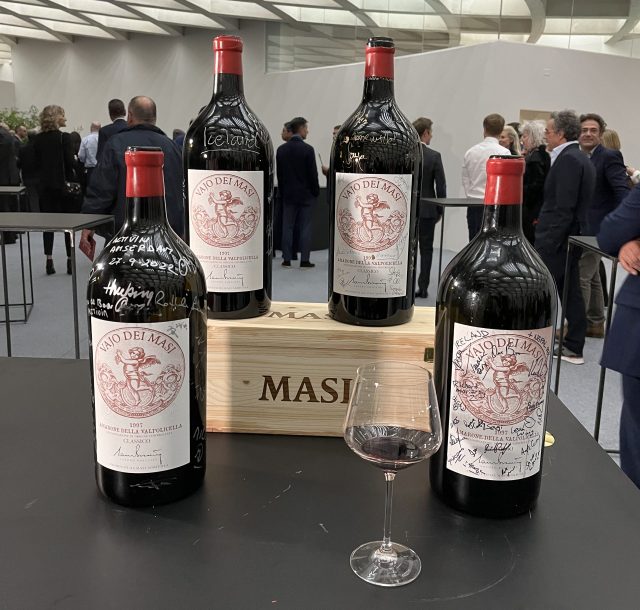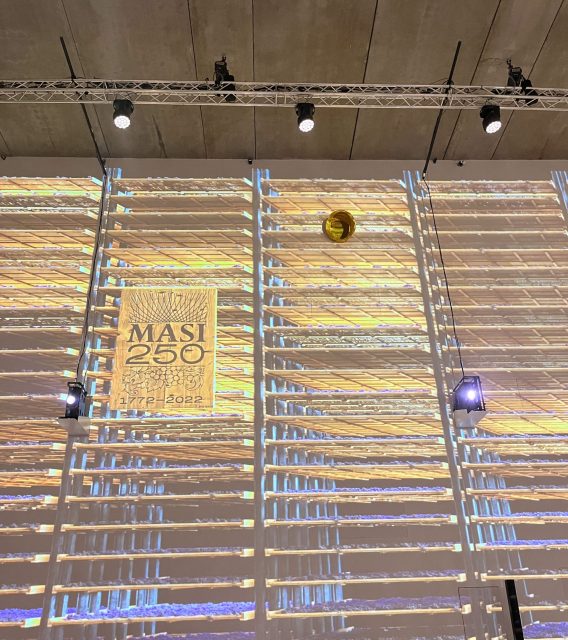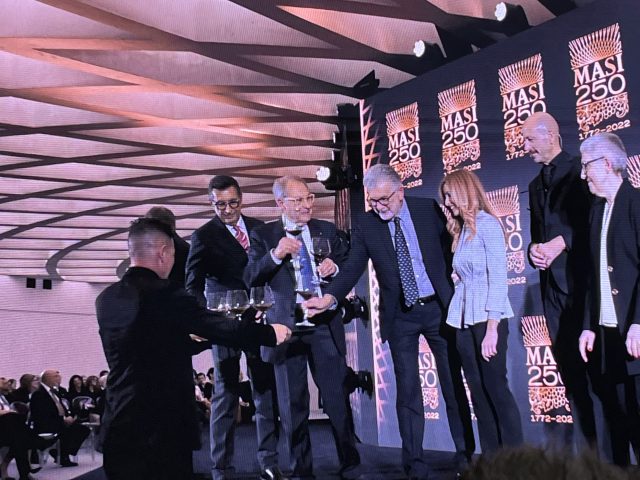This website uses cookies so that we can provide you with the best user experience possible. Cookie information is stored in your browser and performs functions such as recognising you when you return to our website and helping our team to understand which sections of the website you find most interesting and useful.
Masi 250: a vision for the future of Valpolicella
While the Boscaini family’s celebration of Masi’s 250th harvest acknowledged the company’s humble beginnings, its ambitions for the future are appropriately grand.

At what was a truly international event, attended by the great and the good of Italian society as well as journalists from around the globe and several generations of the Boscaini dynasty, Masi marked its milestone anniversary.
Masi Agricola president Sandro Boscaini reflected on Masi’s role as Valpolicella’s ambassador to the rest of the world: “Storytelling means bringing our consumers here – they have to experience our land, our territory. They have to have a place here to meet, near our vineyards, our caves, our cellars…Through wine tasting, food tasting, we give you the chance to fall in love with Italy and our region.”
“The new frontier of the wine business is not an add on, but it goes along the line of modernising our trade,” Boscaini continued.
At the centre of this modernisation will be Masi’s new headquarters, where the celebration was held. While Boscaini referred to Monteleone 21 (as it will be known), still under construction due to delays caused by the pandemic, as a “yard”, the scale of what the site will become is certainly a bold signal of intent.
Federico Girotto, Masi managing director, spoke of how the new site will be “perfectly integrated into the landscape of Valpolicella”, and will be powered by solar panels and geothermal energy.
At the centre of it, described by Girotto as a “great pit of light”, will be a vast ring-shaped room for visitors to gather and discover the brand’s history. It will also celebrate some of the Amarone of other producers in the region.
Perhaps most impressive of all will be a new drying room in the facility. 12 metres of stacked racks, loaded with Corvina, Molinara, Oseleta and Rondinella, will offer visitors a supersized insight into the appassimento method.

This “monument to Amarone”, as Girotto dubbed it, will certainly be a far cry from the traditional drying lofts that Masi still uses for some of its Amarone. Then again, since 1772 Masi has transformed from a single plot in the Vaio dei Masi to an operation producing upwards of 12 million bottles a year that are exported to more than 140 countries.
The celebration also coincided with the 41st Masi Awards. Previous winners, who have their names on plaques on foudres in the cellar (nicknamed “Masi’s sunset boulevard”), include Antonio Carluccio, Hugh Johnson and singer Elisa Toffoli.
One recipient of this edition was Catherine Leparmentier Dayot, who launched the Great Wine Capitals Global Network, of which Verona is a member. On stage she said: “Wine tourism is a niche in the tourism industry, but it has been a very resilient niche during Covid.”
Handing her the award, Mayor of Verona (and former Serie A player) Damiano Tommasi said: “Verona really speaks for itself…Valpolicella and Amarone are very famous, and our territory is very precious – I feel this responsibility.”

At the climax of the ceremony, Masi export manager Giacomo Boscaini opened a magnum of 1997 Amarone. As part of the buildup to the anniversary, bottles of the 25-year-old wine were taken all over the world and signed. “Now we can enjoy it,” he joked, before the rest of the Boscaini family were handed glasses to raise a toast to the next 250 years.

